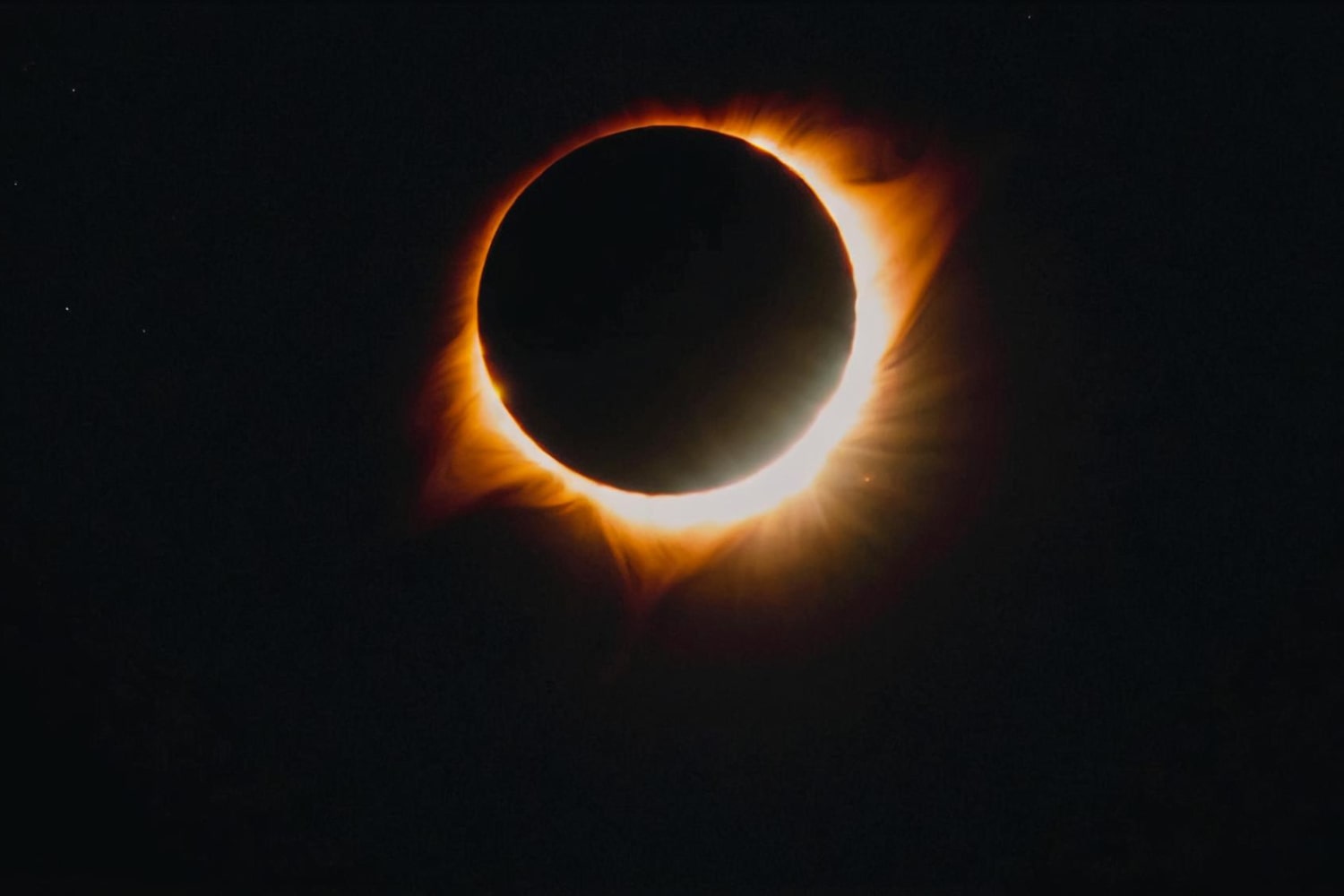Solar eclipses have fascinated humanity for centuries with their suddenness and mysterious nature. Ancient civilizations viewed them as signs from the gods, omens of change, or supernatural warnings. Today, science has thoroughly explained the mechanics of eclipses, yet these celestial events continue to captivate observers around the world. Thousands of people travel great distances to witness a total solar eclipse, even though it lasts only a few minutes. In this article, you’ll find interesting and lesser-known facts about solar eclipses that you might not have known.
- A solar eclipse occurs when the Moon passes between the Earth and the Sun, blocking the Sun’s light either completely or partially. This can only happen during the new moon phase when the Moon is positioned directly between the Earth and the Sun. However, not every new moon leads to an eclipse because of the tilt of the Moon’s orbit.
- There are three main types of solar eclipses: total, partial, and annular. A total eclipse happens when the Moon fully covers the Sun, a partial eclipse occurs when only a portion of the Sun is blocked, and an annular eclipse creates a glowing ring around the Moon when it appears smaller than the Sun. Each type offers a unique viewing experience and atmospheric effect.
- The path of totality, where a total eclipse is visible, is very narrow and usually spans only 100 to 200 kilometers in width. Outside this path, only a partial eclipse can be observed. That is why many eclipse chasers travel specifically to be within the path of totality.
- A total solar eclipse can last up to about 7 minutes and 30 seconds, but most last less than 3 minutes. This short duration makes the phenomenon even more special and dramatic. The longest eclipse of the 21st century occurred on July 22, 2009, and lasted over 6 minutes.
- The same location on Earth might experience a total solar eclipse only once every 375 years on average. This rarity is due to the varying trajectory of the Moon’s shadow with each eclipse. People often wait decades or even a lifetime to see one in their region.
- Viewing a solar eclipse is only safe during the total phase, when the Sun is completely covered. At all other times, special eclipse glasses are required to protect the eyes. Regular sunglasses are not strong enough to provide adequate protection.
- The Moon’s shadow that creates a total eclipse moves across the Earth’s surface at speeds up to 3000 kilometers per hour. This makes the event highly dynamic and fleeting. Observers outside the direct shadow see only a dimming of sunlight.
- During a total eclipse, air temperatures can drop noticeably within just a few minutes. Sudden darkness sets in, animals often change their behavior, and stars become visible in the daytime sky. The overall atmosphere becomes strangely silent and tense.
- Only during a total eclipse can the Sun’s outer atmosphere, known as the corona, be seen. Normally hidden by the Sun’s brightness, the corona becomes visible and offers valuable insights into solar physics. Scientists first discovered the solar wind by studying the corona during eclipses.
- In ancient cultures, eclipses were seen as supernatural or divine events. In China, people believed a dragon was devouring the Sun and beat drums to scare it away. Among the Maya and the Inca, eclipses were interpreted as signs of divine anger or imbalance.
- One of the first scientific explanations of solar eclipses was offered by the Greek astronomer Hipparchus in the 2nd century BCE. He used eclipse observations to calculate the sizes and distances of celestial bodies. His work laid the foundation for future astronomical studies.
- In the Middle Ages, eclipses were often associated with disasters, wars, or plagues. Although astronomers understood the natural cause, the general public held on to superstition for many centuries. The Enlightenment era helped shift perceptions toward a scientific view.
- Solar eclipses follow a predictable cycle known as the Saros cycle. This cycle lasts approximately 18 years, 11 days, and 8 hours, after which a nearly identical eclipse occurs. The Saros cycle was used by Babylonian astronomers as early as the first millennium BCE.
- A rare phenomenon called shadow bands or shadow snakes can be seen just before or after totality. These are wavy lines of light and dark that ripple across surfaces due to atmospheric distortion of sunlight. Though not fully understood, they remain one of the most mysterious eclipse-related effects.
- Solar eclipses can also be observed from other planets in the Solar System. NASA’s Mars rovers, for example, have recorded partial eclipses caused by the Martian moons. These observations help scientists study planetary orbits and atmospheric conditions.
These incredible and fascinating facts about solar eclipses show that they are more than just visual spectacles. They offer valuable scientific insights and reflect the deep connection between humanity and the cosmos. A solar eclipse is a rare opportunity to witness celestial harmony in action. And the more we learn about it, the more it continues to inspire awe.





